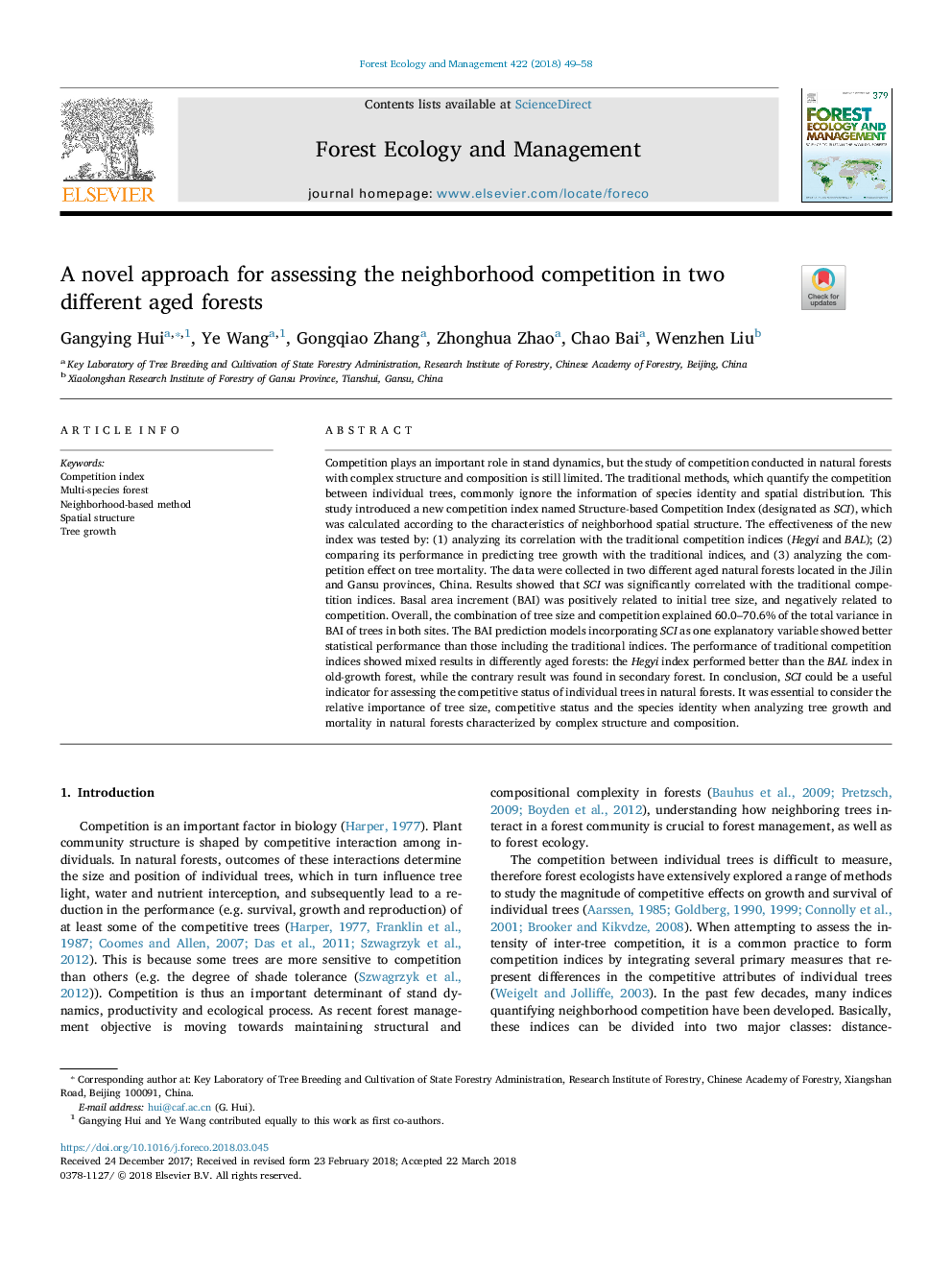ترجمه فارسی عنوان مقاله
یک رویکرد جدید برای ارزیابی رقابت محله در دو جنگل سالم
عنوان انگلیسی
A novel approach for assessing the neighborhood competition in two different aged forests
| کد مقاله | سال انتشار | تعداد صفحات مقاله انگلیسی |
|---|---|---|
| 145839 | 2018 | 10 صفحه PDF |
منبع

Publisher : Elsevier - Science Direct (الزویر - ساینس دایرکت)
Journal : Forest Ecology and Management, Volume 422, 15 August 2018, Pages 49-58
ترجمه کلمات کلیدی
شاخص مسابقات جنگل چند گونه روش مبتنی بر محله، ساختار فضایی، رشد درخت،
کلمات کلیدی انگلیسی
Competition index; Multi-species forest; Neighborhood-based method; Spatial structure; Tree growth;

